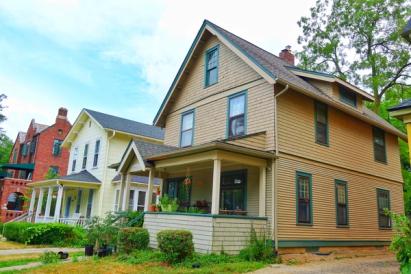Here's How to Get Rid of PMI ASAP
Written by:
Dan Silva
Dan is the Vice President of Marketplace Lending at Own Up. Throughout his career, he has held executive leadership positions in the mortgage and banking industry.
See full bio

If you are among the millions of people who bought a house with less than 20 percent down, you know all about private mortgage insurance—better known as PMI—because you have it. And more than anything, you want to get rid of it.
This makes total sense. Buying a mortgage with the help of PMI allows homeowners to put down as little as 3 percent, but the costs are significant. For a $250,000 house, homeowners with credit scores under 700 can pay up to $355 a month just in PMI payments according to an Urban Institute study of FHA mortgages versus those with PMI. And because PMI generally cannot be canceled until your equity in your home exceeds 20 percent, many homeowners are saddled with it for years.
Own Up wants everyone to achieve the dream of homeownership. For homeowners with PMI, the dream is much more costly. So, as part of our mission to educate people about the homeownership journey, we offer the following tips on how to get rid of PMI.
A PMI Primer
More than half of homeowners with PMI are first-time homebuyers who did not have the 20 percent down payment banks require for a conventional loan. Getting PMI allows people to buy a home and build up equity instead of waiting 5 to 10 years to have the needed 20 percent.
Banks charge PMI because they don’t like losing money. When the down payment isn’t big enough to protect the bank in cases where a borrower defaults, banks charge PMI. Banks require PMI to protect themselves, not the lender.
Cancelling PMI is not always automatic, nor is it easy. Here are six way to eliminate PMI from your mortgage.
1. Wait for It to End
If you are current on your mortgage payments, PMI will automatically terminate when your principal balance is 78 percent of the original home value, which means you have 22 percent equity in your house. The details of how this will happen are laid out in your PMI disclosure forms.
2. Make Additional Payments
On a 30-year mortgage with 10 percent down, you will cross the 80 percent loan-to-value threshold in about seven years if you make the minimum monthly payments. Any extra payments you make over that time will speed up that clock and save you money in interest and future PMI.
3. Get a Home Appraisal
Get your home reappraised to find its current market value. The combination of your increased equity in the house over time and its change in market value could lead to a higher loan-to-value ratio. While you will pay the bill, it is best to use an appraiser approved by your lender to increase the chances of getting the new value approved.
4. Refinance Your Mortgage
If mortgage rates have dropped since you bought your house, refinancing might result in a higher loan-to-value ratio. Just be sure to do your math as refinancing has costs that need to be factored into any decision. If you can drop your interest rate at least 1 percentage point, refinancing is worth considering. Use this calculator to see if refinancing is right for you.
If it is, reach out to us. Own Up’s business is based on three core values: We're honest about money. We're radically transparent. And we’re simple to use. Our home advisors can help you find a better rate on your mortgage. A difference of just 0.25 percent is equal to about $20,000 over 10 years of your mortgage.
What you Need to Know
Getting rid of PMI early is not easy, but it’s also not impossible. Just make sure to follow the rules. According to the Consumer Financial Protection Bureau, getting rid of PMI requires the following steps:
1-Your request must be in writing.
2-You must have a good payment history and be current on your payments.
3-Your lender may require you to certify that there are no second mortgages on your home.
4-Your lender can also require you to get an appraisal to prove that the value of your property hasn’t declined below the original value of the home. If the value of your home has decreased below the original value, you may not be able to cancel PMI.
If you have met all of these requirements and you request is still denied, you can submit a complaint to the Consumer Financial Protection Bureau and the law requires that it be considered.


